King and Co The Tree Nursery’s top ten evergreen hedges. There is wide variety of evergreen hedging plants available to the UK market, we look at the hedge plants in further detail.
When considering which plant to use for evergreen hedges, a number of factors need to be considered. Mostly, evergreen hedge plants are easy to establish, provide an attractive all year round screen and can be planted at all sorts of heights.
There are a number of different hollies suitable for hedging. The native holly (ilex aquifolium) is very popular with its glossy, sharp, spiky leaves and dependant on whether you have male or female plants, you will get a great display of red berries. Berries are an important food source for the bird population and hedge cuttings can be handy for Christmas decorations. The big advantage holly has over others is its shade-loving properties. It will thrive where others require full sun and remain valuable in any planting scheme. However, holly is relatively slow growing and is often discounted for that reason. Here is our comprehensive guide to Holly trees.

Western red cedar comes in several varieties and is valuable as a slower growing conifer hedge. Less well known than other conifer hedges, Thuja will survive on clay soils and can provide a completely compact hedge when regularly trimmed. Also provides a valuable habitat for nesting birds. Thuja hedge plants can also add winter interest to gardens, with some varieties turning partially bronze in the Autumn.
Has a much smaller bluish leaf than English laurel and has a slower growth rate. However, there are few hedges that can match the majestic sight of a mature Portuguese laurel. Also valued as a very compact hedge which can be located in tighter situations. New purple shoots paired with white flowers in the Spring add a premium quality. Prunus lusitanica does not require a great deal of maintenance once established although slightly more expensive than others. Click here to view our range of Portuguese laurel hedge plants.
Despite its bad press, Leylandii remains one of the top sellers in the UK, primarily for its rapid growth rate and instant screening. Stories of monster size structures only surface where a lack of maintenance is apparent. Kept trimmed twice yearly leylandii will not provide any issues. Another hedge that is often overlooked for its nesting habitat and due to mass production is very reasonably priced. Leylandii easily reaches its mature height of around 12 metres with correct care. Click here to view our range of Leylandii hedging available at our Tree Nursery based in Essex.
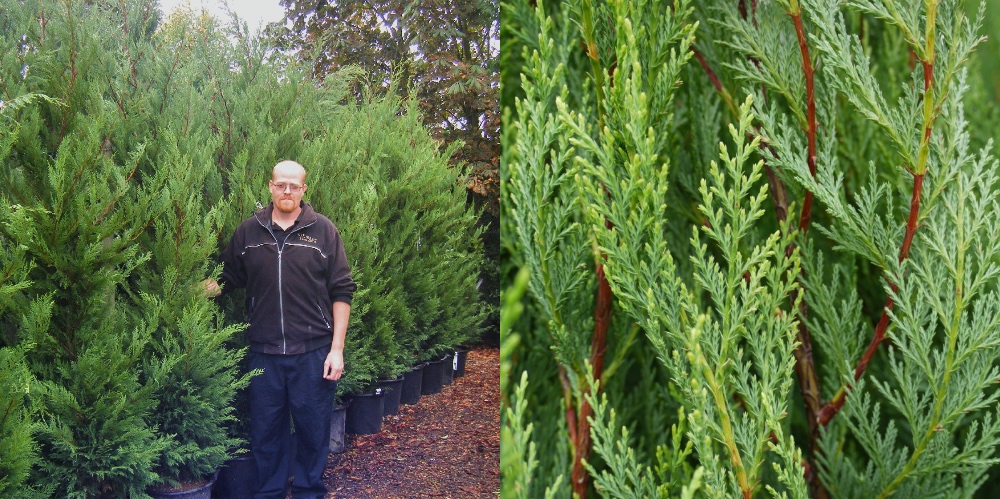
There are a couple of different privet (Ligustrum) which are often used as a boundary hedge. They have the advantage of being available as bareroot hedge plants making them very much cheaper than rootballed or containerised specimens. Planted in a double row privet will thicken nicely into a solid evergreen boundary. Ligustrum japonica has shiny green, smallish ovate leaves which are complimented with white flowers in the Spring.
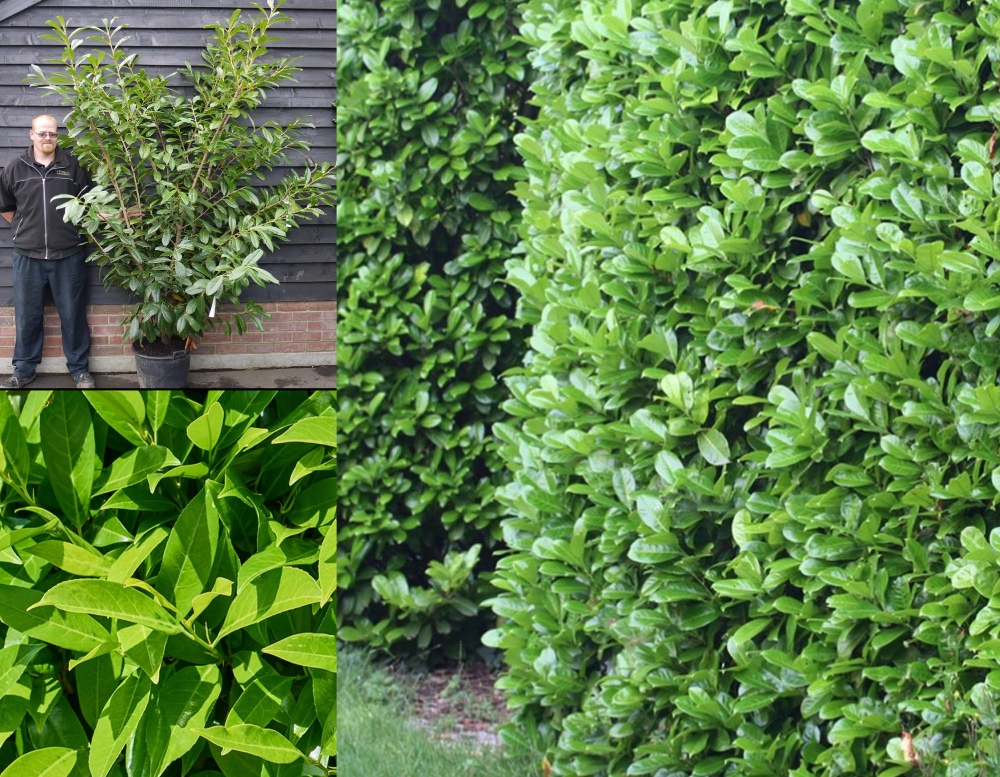
Although English laurel is not always chosen for an evergreen hedge, it is one of very few that ticks all the boxes. Its one of the most economic methods of creating an instant screen and is available up to 3m in height. It is quite a fast grower, and can be clipped hard with a hedge cutter twice a year. It’s quite at home in many different environments including rural and urban property and is easy to establish. King and Co favour the ‘Novita’ laurel variety given is higher tolerance to disease and colder weather than the traditional ‘Rotundifolia’. Laurel is also grown into evergreen screening trees due to its dense foliage. After watering regularly throughout the first growing season, it will then usually look after itself. Our laurel stock can be viewed here.
Will make a fabulous evergreen hedge and thrive in most well drained soils. Yew is seen as a traditional English plant that is most in keeping with older country properties as well as being quite at home in the urban environment. Often supplied rootballed, straight from the field at sizes up to 2m. King and Co also supply more reliable container grown Taxus plants. However, if you decide to choose Yew for your hedge you should be aware of the potential difficulties that can occur post planting. Yew is very sensitive to over watering. Use a professional for your installation work. Our reasons why Yew should be used when creating a hedge

Choose from a number of different types, green, variegated different combinations. A medium growth habit and reliable plant, euonymus can be installed at closer intervals to establish an evergreen hedge that will require very little maintenance. Euonymus is now one of the leading box (buxus) replacements. Our most popular is Euonymus ‘Jean Hughes’. View our range of Euonymus here.
For a hedge that will not grow above 3m when mature, Viburnum Tinus is a most reliable of plants. When planted at the rate of two plants per linear metre it will soon grow into a solid boundary hedge. White/pink flowers will reward you through the winter months. Dark green glossy leaves and a dense growth habit enable Viburnum Tinus to quickly add form and interest to your garden.
A large spiky evergreen plant which is also known as Firethorn. A fast growing hedge that is particularly valuable where deterring intruders is a consideration. Another plant that provides winter interest and berries for the birds. King and Co stock Red, Yellow and Orange Firethorn hedge plants. Pyracantha will grow in almost any soil and will benefit from a twice-yearly trim. Always wear thick gloves when handling pyracantha!
Holly (ilex aquifolium) is one of the best hedge plants for a shaded area.
Pyracantha champions the defensive hedge category with strong, sharp thorns. Perfect for creating an impenetrable boundary hedge.
King and Co offer several box hedge alternatives, for similar growth rate and form factor we would recommend Euonymus ‘Jean Hughes’ or ‘Greenspire’. Ilex crenata ‘Caroline Upright’ is another perfect buxus alternative.
In ascending success rate order, container grown plants are most likely to survive following planting – they can also be planted at any time during the year. Bare root and rootballed hedging is generally cheaper for this reason.
Evergreen hedge plants that are rootballed must be planted during the season (November to March), whereas container grown plants can be planted any time during the year.
As we enter the winter months, it is important to ensure that your garden holds interest when other species defoliate. The right selection of trees can bring structure, colour, and character even in the depths of winter. In this second half of our two-part article, we highlight the remaining trees in our top 10 trees for winter interest!
The Nordmann Fir stands out with its horizontal branches and glossy dark-green needles. This evergreen conifer is popular in larger gardens and woodlands, it also serves as an excellent non-drop Christmas tree. The Nordmann Fir keeps its needles well, making it a practical and attractive choice for winter interest.
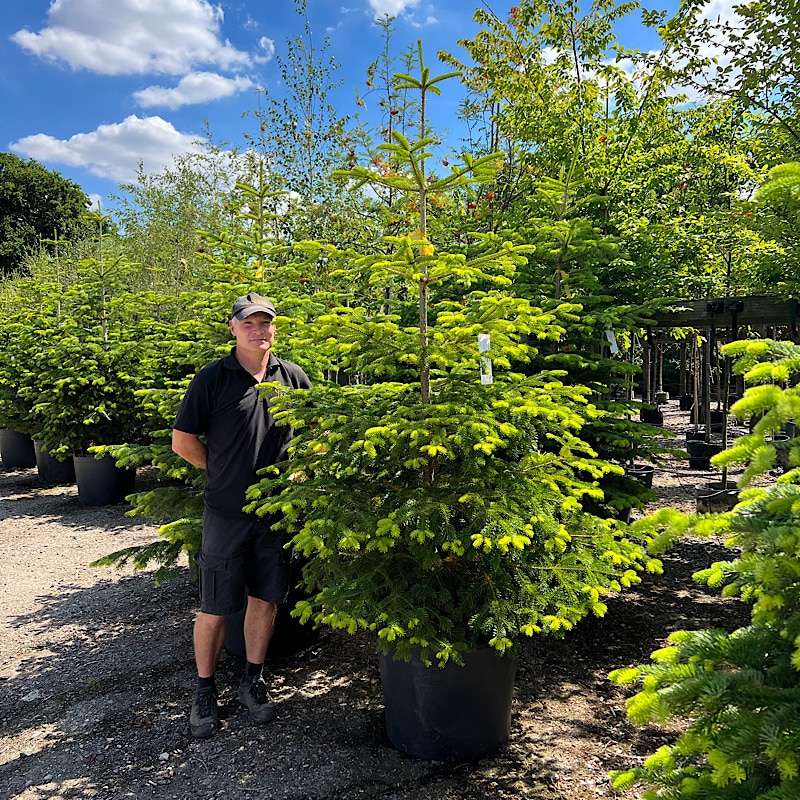
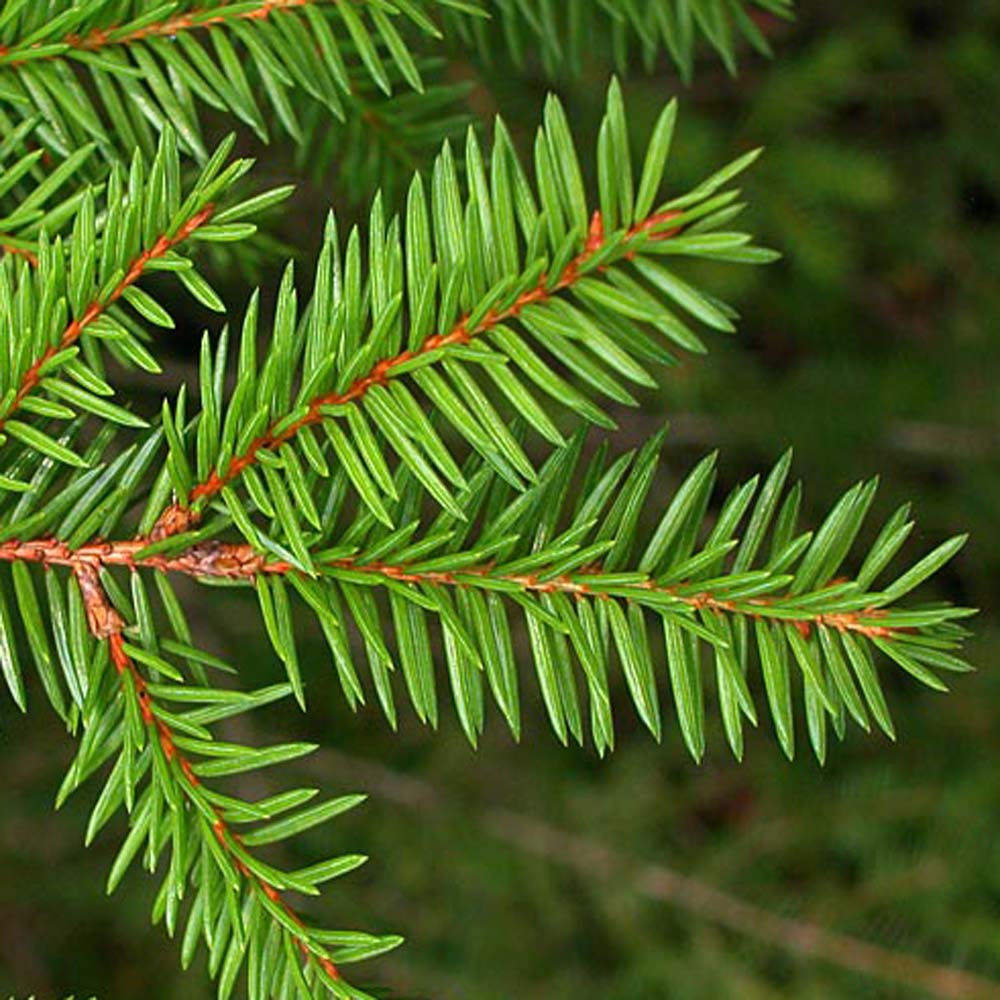
This compact maple delivers a double dose of beauty. In autumn, its leaves turn a brilliant orange. As the foliage drops, vibrant coral-red stems take over, adding a bold splash of winter colour. Ideal for smaller gardens or focal points, ‘Sango-kaku’ is a striking addition to any collection of trees for winter interest.
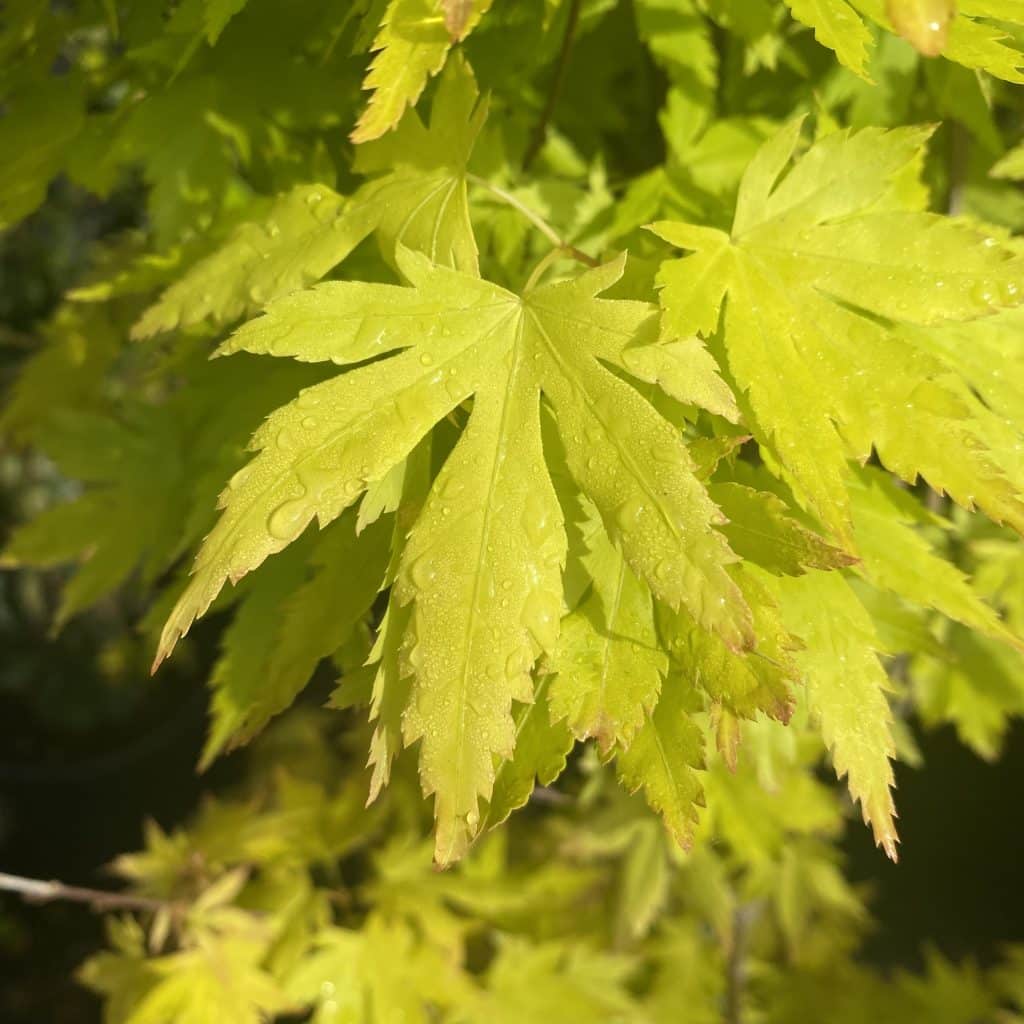

Often overlooked, the River Birch deserves more attention. Its shaggy, peeling bark provides rich texture through the colder months. As its name suggests, it does prefer a wetter area in the garden, but this can be an advantage where drainage is an issue as it will tolerate some waterlogging. This birch stands out for both form and function for winter interest!
Why choose ‘Nellie R Stevens’ over the native holly? It reliably produces vibrant red berries that stay through December, adding seasonal cheer. Birds flock to its fruit, and its evergreen foliage offers excellent screening. This is one of the best trees for winter interest, combining beauty and practicality.
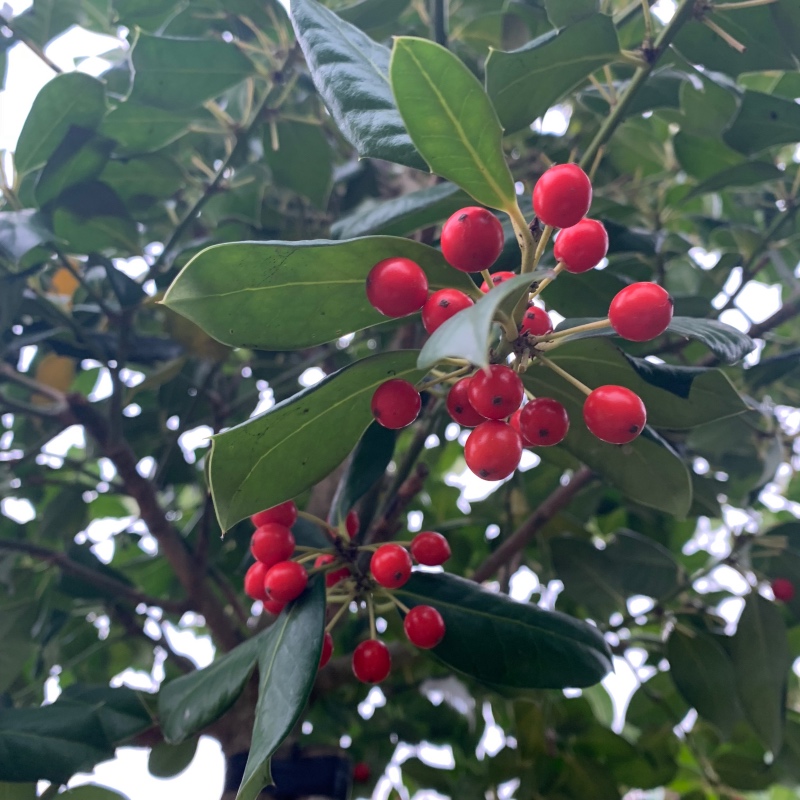
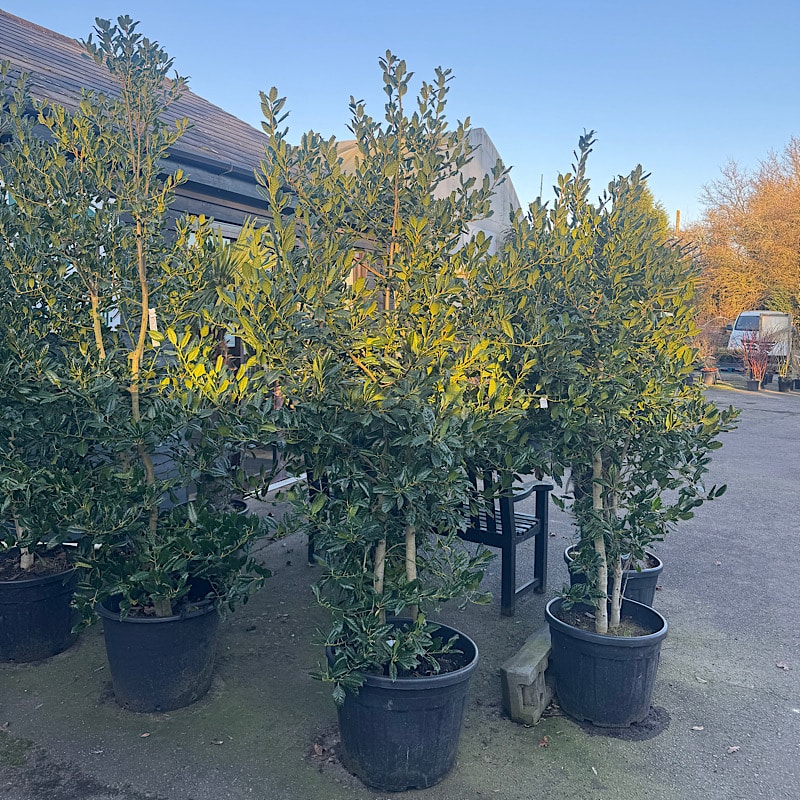
Known for its unique striped bark, the Snake Bark Maple brings character to your winter garden. Its green bark streaked with white lines gives it a reptilian appearance. Autumn sees its serrated leaves glow orange and red, while spring brings tiny yellow flowers. This is a show-stopper in any lineup of trees for winter interest.
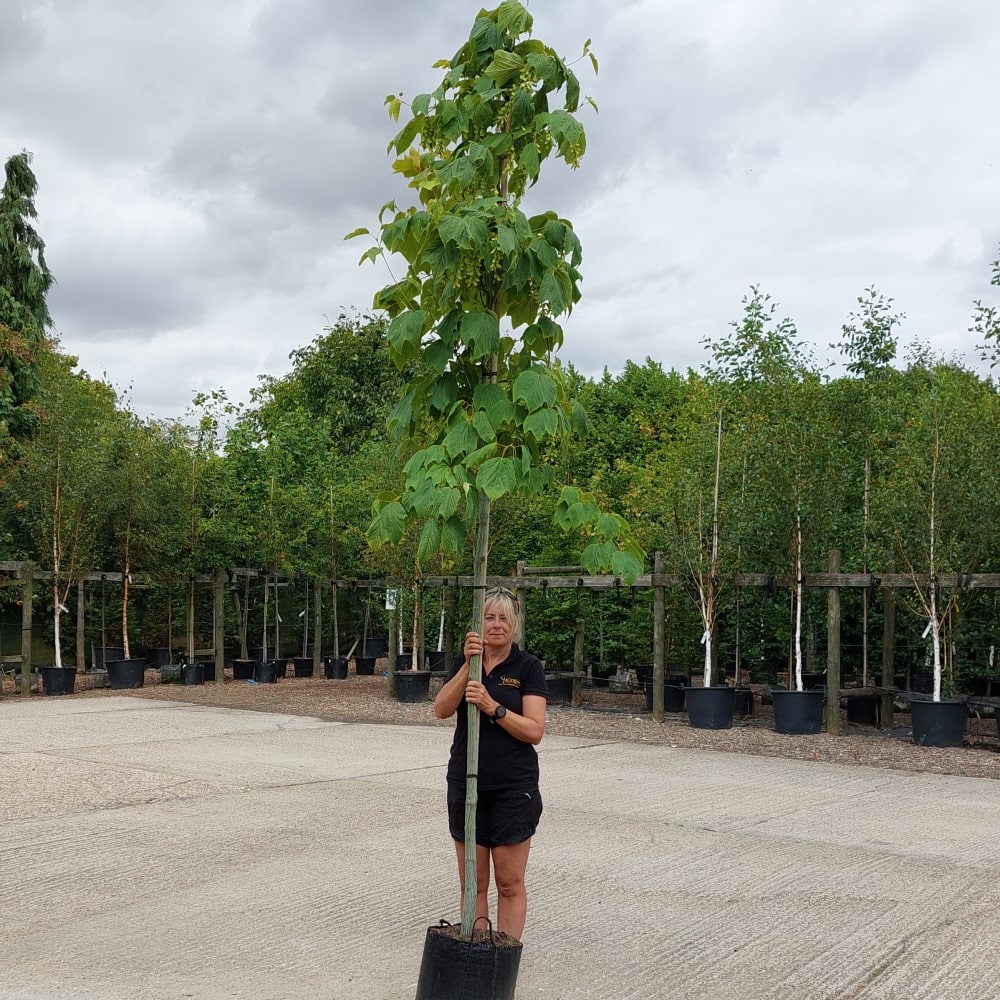
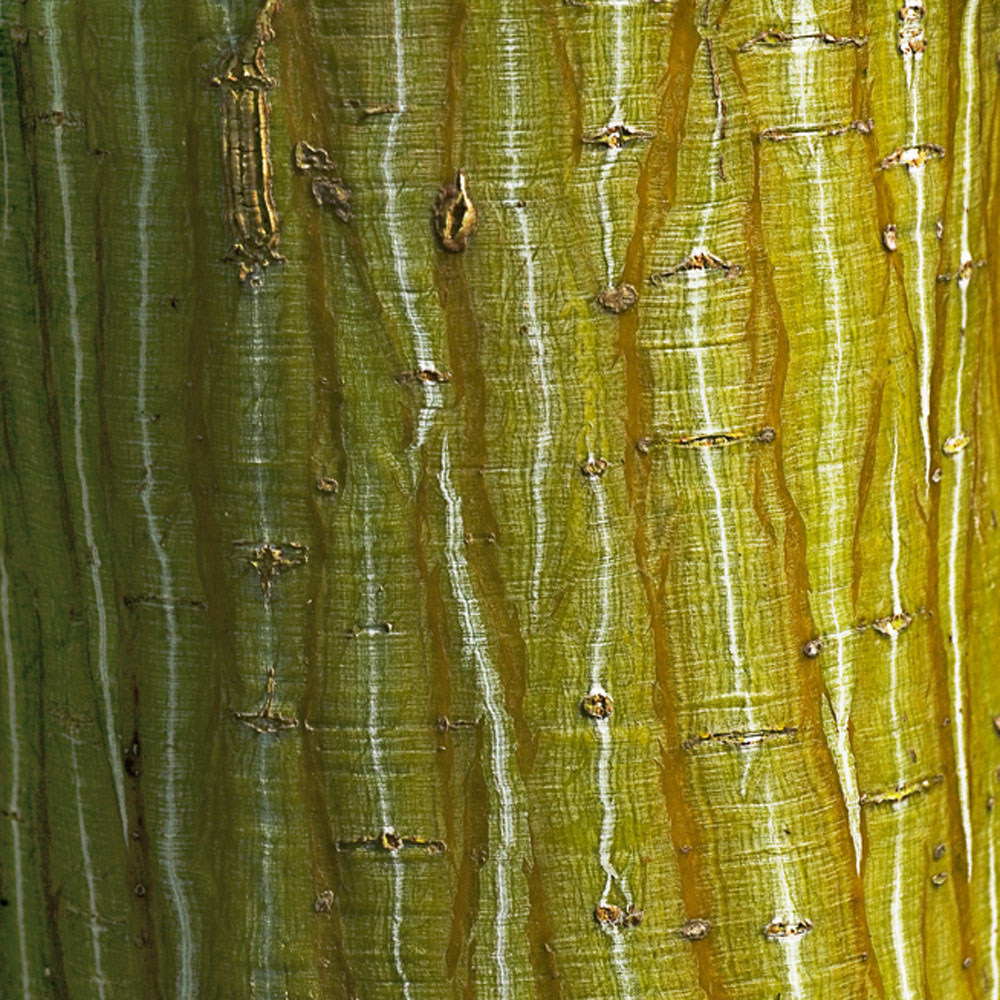
Read part two here. Looking for more ideas or want to see these trees in person? At King & Co, we stock a wide selection of trees for winter interest, along with hedging, topiary, screening trees, and shrubs.
As winter approaches, many plants lose their leaves and fade into the background. Planting trees for winter interest is great at this time of year as it can work to bring beauty and structure to your garden, even in the coldest months. Here are some of our picks to brighten your landscape this winter:
The Tibetan cherry is perfect for gardens that need year-round appeal and winter interest. It is small deciduous tree that stands out with its glassy, copper-red bark and pale pink or white flowers. It thrives in most soils and prefers a sunny spot.
A standout tree for winter interest. This charming cherry bears delicate white flowers brushed with pink, blooming intermittently through the coldest months. It brings welcome colour to the bleakest days. Compact and graceful with a spreading form, the Pink Winter Flowering Cherry is a must for any winter garden.
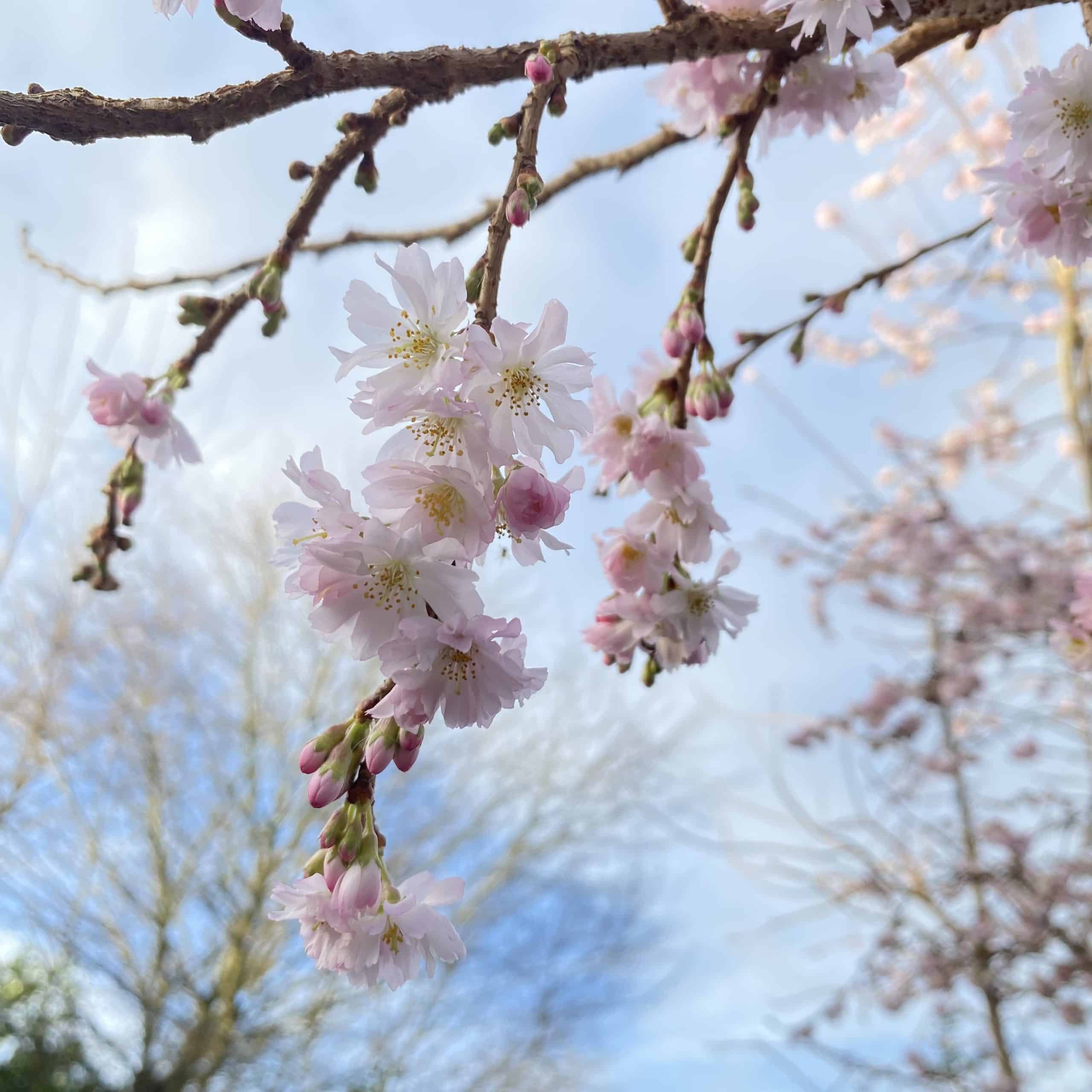
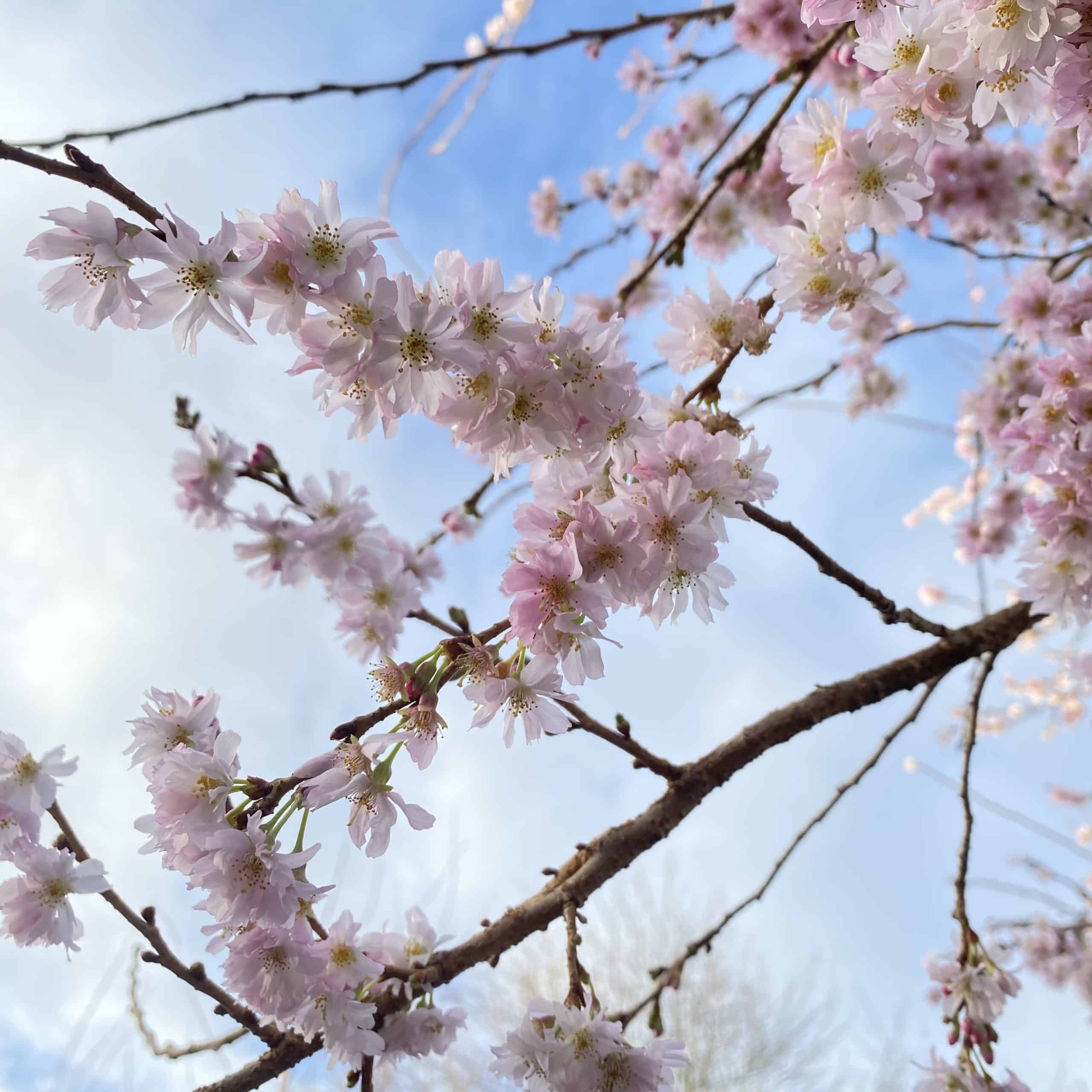
The Siberian dogwood is a striking ornamental shrub known for its vivid red stems that glow against the muted tones of winter. Once its leaves fall, the brilliant stems take center stage, adding bold colour and contrast to the winter landscape. It’s a popular choice for flower borders, mixed shrub beds, and informal hedging, offering year-round interest and structure. For the most vibrant colour, plant in groups and prune annually to encourage fresh, bright growth!
Known for its striking, peeling white bark, the Himalayan birch is one of the UK’s most popular amenity trees. Often planted in groups for maximum visual impact, its brilliant white trunks gleam against darker backgrounds, making it a standout feature in the winter garden. Whether grown as a graceful standard or a sculptural multi-stem, this tree is great for year-round elegance and architectural interest.
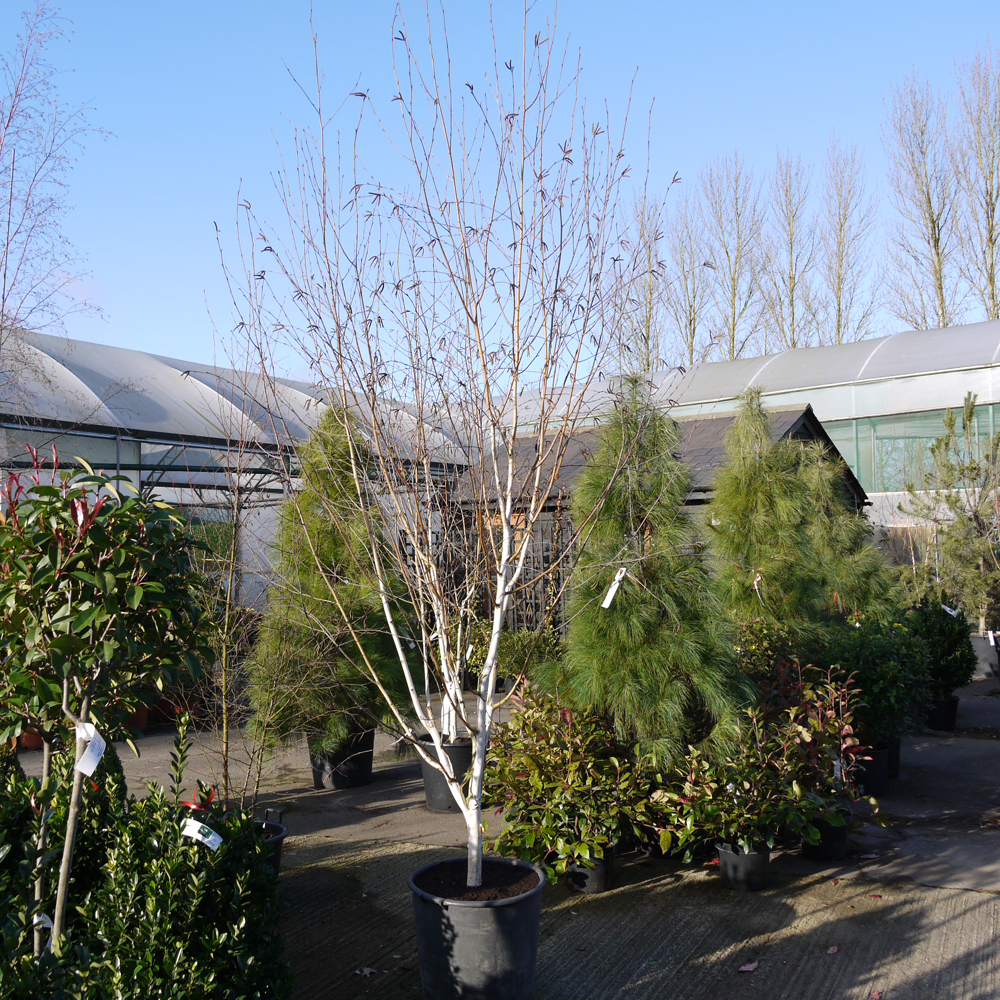
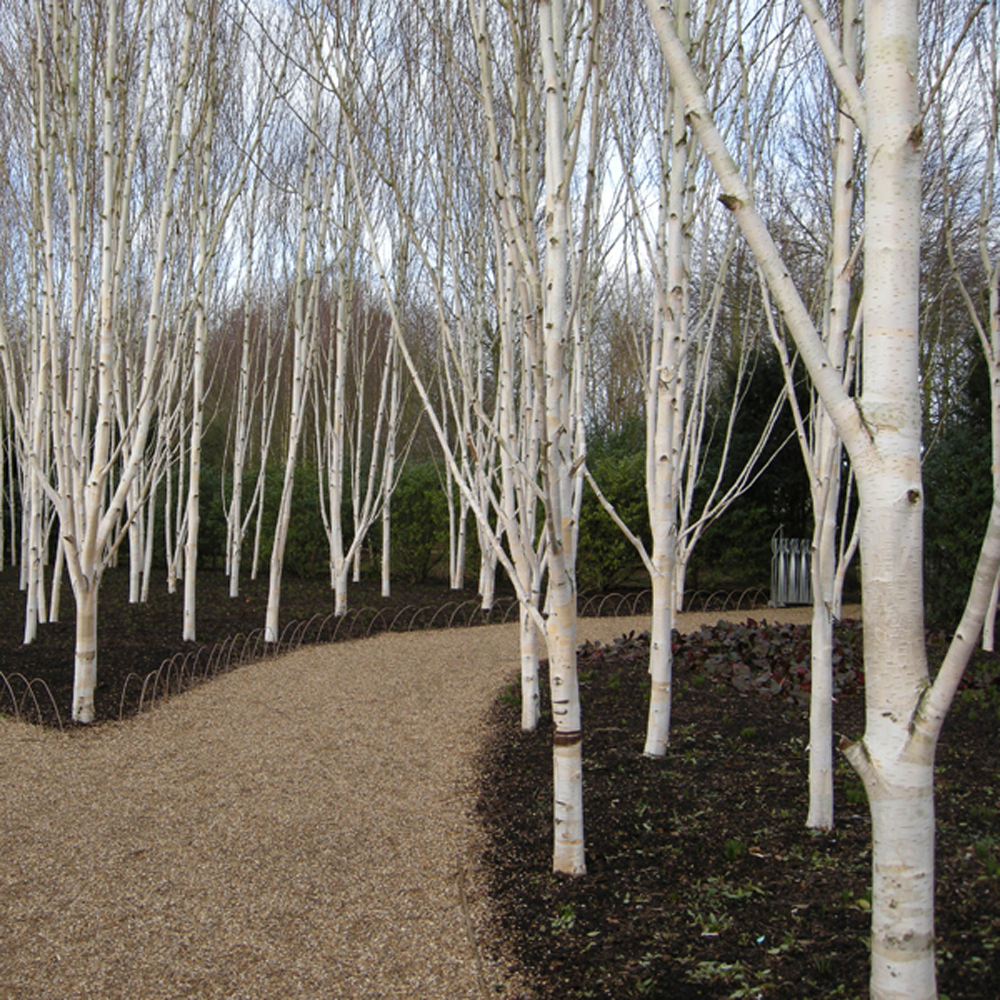
Hornbeam is a versatile tree with bright green, ovate leaves that turn rich shades of orange and brown in autumn. Although deciduous, hornbeam often retains its dried, brown leaves well into winter, offering partial screening during the colder months. This makes it ideal for gardens where privacy is needed without overly shading ground-floor windows when light is at a premium.
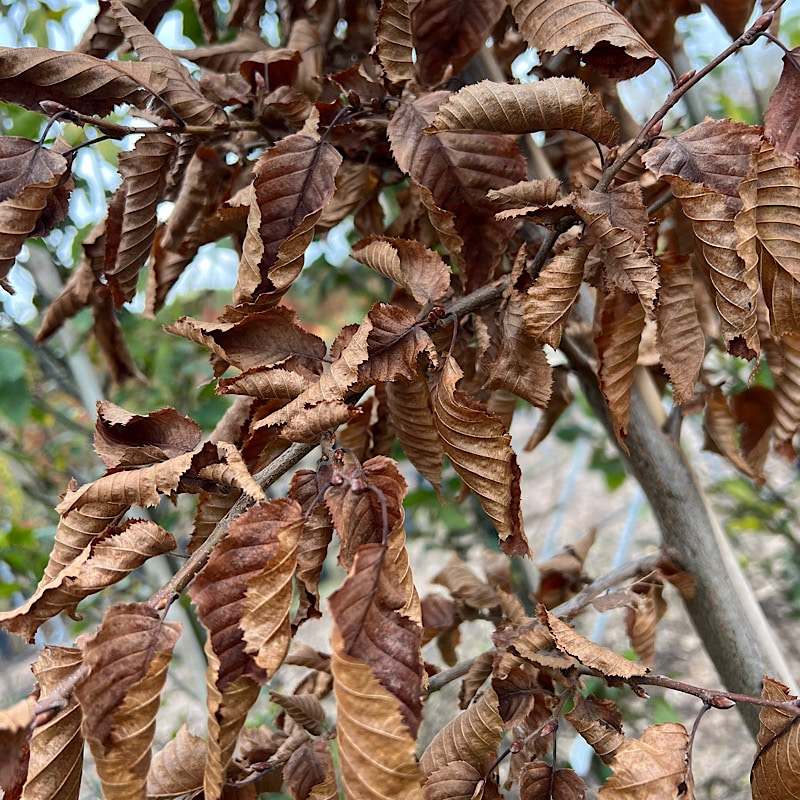
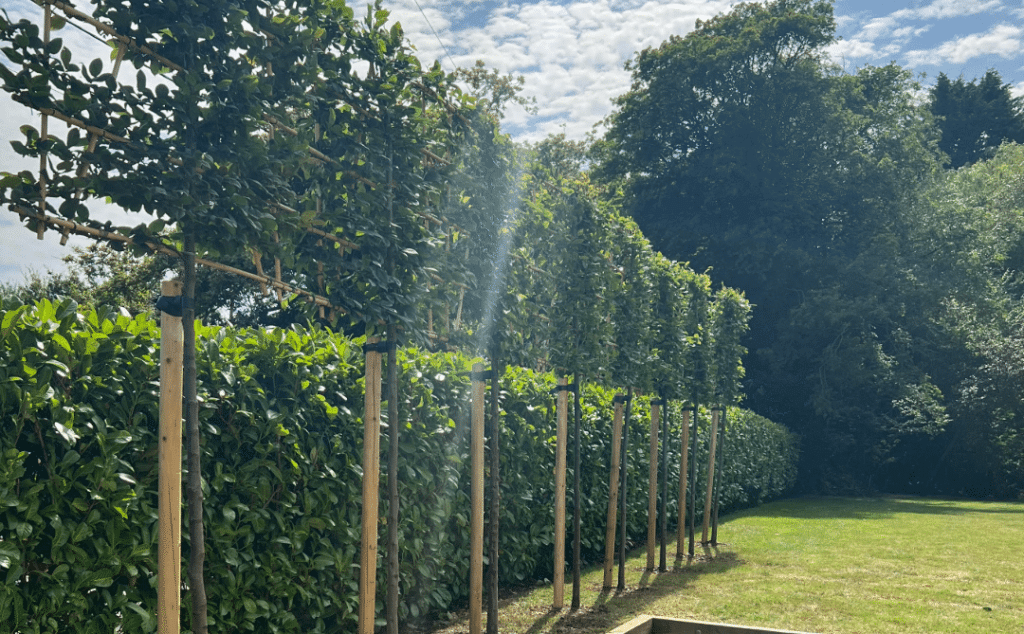
Choosing trees known for their winter interest is a great way to brighten up bare landscapes. Read part one here for more suggestion!
Rootballing is the process in which plants are lifted from the ground with a ball of soil around the roots. If you’re wondering how we lift rootball trees, watch the video below. Please note they are only available during the dormant season, which usually runs from November to March!
Hopefully this video effectively showed the method we use for lifting trees with their rootball intact! If you have any questions, or need a quote for a project, please contact our sales team. We’re happy to help!
1. Tree Planting: Is Autumn a good time to plant?
2. Tree Planting Tips: How to correctly install your trees.
3. Tree Planting: When should you plant bare root and rootball trees?
4. Bare Root: How do you plant a bare root tree?
5. A Guide to Planting Bare Root Hedging.
6. Royal Horticultural Society (RHS) website
Now that the dormancy period is here and the bare root planting season is in full swing we though it would be a great time to highlight out top 10 bare root plants! These are just a few of our favourite varieties known for their benefits to wildlife, seasonal interest and importance in hedges across the British Isles.
Buckthorn is excellent for wildlife, forming a dense, thorny thicket that provides shelter. This large shrub/small tree has glossy dark green leaves that turn yellow in autumn. It produces small greenish-yellow flowers in spring and red berries that ripen to black in autumn.
Guelder rose has dark green, maple-like leaves that turn pink and red in autumn. It produces flat clusters of fragrant white flowers in spring and bright red berries in autumn. The berries provide excellent food for birds.
The Wild crab apple has dark green leaves and a stunning display of pink-tinged white flowers in spring. In autumn, it bears greenish-yellow fruits flushed with red. Its flowers attract bees, and its berries provide food for birds. It is a great choice for seasonal interest!
Spindleberry has green leaves that turn brilliant red in autumn. It produces small flowers in spring, followed by red fruits that split open to reveal bright orange seeds. Its vibrant colours add seasonal interest, while its flowers and berries attract wildlife.
Field maple is a must-have for mixed planting schemes. Its palmate green leaves turn rich shades of red and gold in autumn. Small greenish flowers in spring develop into winged fruits, dispersed by the wind. Adaptable and full of seasonal interest, it’s ideal for hedging, screening, or as a stand-alone tree.
Hazel has rounded green leaves that turn yellow in autumn, long yellow catkins in early spring, and edible nuts later in the year. It supports biodiversity by providing food and habitat for wildlife like squirrels. Hazel also responds well to coppicing, helping create a diverse woodland structure.
Blackthorn is a thorny tree with a dense, rounded crown and suckering tendencies. New shoots emerge from its roots, forming a thick, impenetrable thicket. Combined with its thorny branches, it makes an excellent boundary hedge and effective intruder deterrent.
Dog rose has long, arching branches with sharp thorns, large fragrant pink-white flowers in spring, and bright red berries in autumn. Often seen in British hedgerows, it’s ideal as a natural intruder deterrent and a great choice for attracting wildlife to borders and beds.
Common dogwood is a fast-growing shrub with an upright, bushy habit. Its green leaves turn rich red in autumn, and its young red stems add colour in winter. It is a great choice for strong seasonal interest.
A key component of native hedgerows, Hawthorn is easily our top bare root pick. Its dense growth and sharp thorns make it an effective natural barrier, while its autumn berries provide a valuable food source for birds!
Since bare root plants are supplied without pots or compost, they cost up to 70% less than those grown in containers. Their lower weight also means cheaper delivery charges too!
Successfully establishing a newly planted tree or hedge is much easier during the bare root season as the ground is moist and the temperature is cooler. If you get your bare root trees in the ground now, your trees will be ready to flourish when the weather starts to warm up next Spring/Summer.
Hopefully you got some inspiration from our top 10 bare root plants, please contact us if you have any more questions. We’re always happy to help!
1. Bare Root Planting Tips: How to establish a native hedge on a tight budget
3. How Do Accessories Protect Bare Root Plants?
4. How to Plant Bare Root Hedging and Trees: A Beginners Guide
In 2018, we proudly celebrated our 40th planting season and marked four decades of growing, supplying, and installing quality trees and hedging since our founding in 1978.
King & Co remains a family-run business, owned and operated by the original King family. Our passion for trees and commitment to outstanding service have never wavered. At our Rayne nursery you won’t find coffee shops or retail concessions, just a dedicated team focused on growing and delivering premium trees and expert installations.
Over the years, we’ve had the privilege of contributing to a wide range of high-profile projects, supporting infrastructure and beautification efforts. These include the Stansted Rail Link, Sizewell Power Station, the Braintree and Martlesham bypasses, and HMP Chelmsford. Our esteemed clients have also included Williams F1, Lord R.A. Butler, Felsted and Hallingbury Schools, the RHS, Essex Wildlife Trust, and Braxted Park. We even played a role in the clearance for the Essex section of the M25.
We’ve also been honoured with numerous industry accolades, including a Gold at the RHS Chelsea Flower Show, recognising our horticultural expertise at the highest level. In 2019, our nursery welcomed then-Prime Minister Boris Johnson as part of his Conservative leadership campaign tour.
As we celebrated our 40th birthday, we extended our heartfelt thanks to all our customers, both past and present. We look forward to another four decades of growing!
Planting a tree in remembrance of a loved one can be a deeply comforting act, providing a peaceful and lasting place for reflection. We’re often asked what varieties make the best memorial trees, so we have shared some considerations to help.
Choosing the right memorial tree can feel like a big decision, and it’s natural to wonder where to begin. Many people understandably wish to plant a tree that held special significance for their loved one. While personal preference is important, it’s also wise to consider a few key factors to ensure the tree thrives and serves as a lasting tribute.
Here are some important considerations:
We usually recommend selecting a tree known for its longevity. You might also find a native British species particularly fitting for the local environment. Trees like Oak, Hornbeam, Holly or even Magnolia often prove to be very suitable choices for memorial plantings.
While we have provided some recommendations that we believe would be suitable, we are absolutely open to any suggestions you might have. We are always mindful of the difficult loss you and your loved ones have experienced, and we are committed to assisting you with the utmost care and consideration during this time.
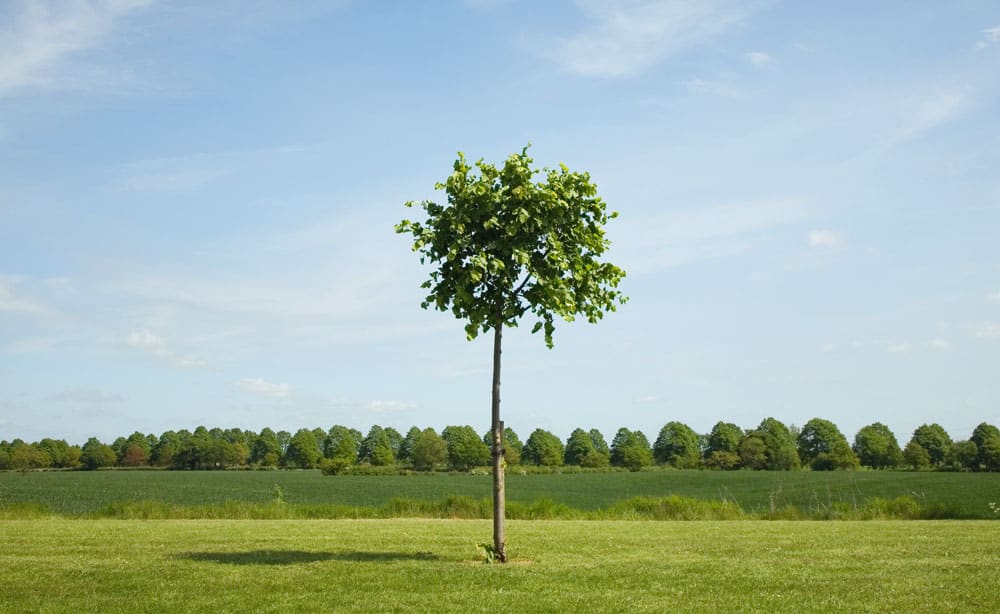
Given the significance of memorial trees, it is important that they are planted correctly to help give your tree the best possible start. While a landscaper can certainly handle this for you, we also offer a planting service for customers in Essex and nearby areas. For those who prefer to plant their tree themselves, we have created a helpful video guide. This video demonstrates professional techniques for planting and staking, offering valuable guidance to help your tree thrive!
Irrigation is the single most important thing to consider post installation. During the first growing season, your new tree will need watering at least three times a week. After this initial period, watering will only be necessary during extended periods of dry weather.
Memorial trees are often planted in meaningful locations, which may not always be easily accessible for regular watering. In such cases, we recommend considering the installation of a tree watering bag. This is an effective solution for maintaining the necessary soil moisture without frequent on-site visits.
For further assistance in selecting the best memorial tree for your loved one, please feel free to reach out to our sales team. We are happy to offer friendly, no-pressure guidance, to help you find the ideal tree for your specific needs!
Trees enter a dormant phase from November through March. This is a natural rest period where growth slows and metabolic activity decreases. During this time, trees conserve energy and resources to prepare for the warmer weather and the next growing season. If you are wondering when to plant bare root and rootball trees, this dormancy window is the only opportunity. Once active growth resumes in spring, only container-grown trees are suitable for planting.
While container-grown trees can be planted year-round, the dormant season opens up additional planting options…
Bare Root. These plants are only available during dormancy because they’re lifted directly from the ground without soil around their roots. This makes them easier to transport and significantly more economical than container-grown stock. Smaller hedge varieties are most commonly sold as bare root, but the suitability of planting large plants this way depends on species and height.
For more information on bare root plants as well as helpful planting tips, check out this guide!
Rootball. Rootball trees are also lifted during dormancy but with a ball of soil intact around their roots. This provides extra protection and helps support successful establishment, especially for larger trees and hedging. Rootballs are another practical, cost-effective way to create an instant hedge.
Knowing when to plant bare root trees makes all the difference. Dormancy is the only window where bare root and rootball trees can be planted safely. Make the most of the cooler months by choosing these options, your landscape will be ready to thrive come spring!
Known for its slow growth and famously toxic berries, we are often asked “What are the benefits of planting Yew?” It’s a fair question, and the answer is that despite these traits, the English Yew offers extensive advantages…
This incredibly long-lived tree has witnessed centuries of British history, and its strong, flexible wood was famously used to craft English longbows during the medieval period. As one of just three native conifers in the UK, yew offers a unique combination of timeless beauty, cultural significance, and long-term practicality. These qualities make it an ideal choice for many gardeners and landscapers.
A staple in British landscapes for centuries, yew has earned its reputation as the “Rolls Royce” of hedges. It is ideal for those seeking an evergreen boundary that is both elegant and low-maintenance over time. Yew also has dense foliage that can be easily clipped into sharp lines or shaped into decorative forms such as spirals, cones, and topiary balls. While its growth is slow, the results are long-lasting and highly rewarding, making it a top choice for traditional and formal garden designs.
Yew and the upright Irish yew species (Taxus baccata ‘Fastigiata’) are a common sight in churchyards and burial grounds. Historically associated with themes of death and resurrection, their role in the modern world has expanded significantly. Today, yew clippings are harvested for use in life-saving anti-cancer drugs, which is a powerful contrast to their ancient symbolism.
We supply most of our yew hedging to customers in rootballed form between the months of November and March, as this is the most successful method of transplantation. Container-grown yews are available during summer, but extra care must be taken with irrigation, as yew is sensitive to waterlogging. With the right preparation and site selection, a yew hedge can thrive for decades.
Hopefully this helped to explain the benefits of planting yew highlighting its qualities of beauty, longevity, and usefulness. Whether for privacy, ornamental appeal, or its historical legacy, yew remains one of the finest evergreen hedging options available today!
The term ‘native hedge’ can sometimes cause confusion. Generally, it refers to a hedge composed of plants that naturally occur within the British Isles.
From a naturalist’s perspective, these native plants are incredibly important as they provide essential habitats for a wide variety of birds and insects, offering them the resources they need to survive. When establishing or enhancing hedgerows, it’s beneficial to include berry-bearing plants and fruit-bearing trees to further support local wildlife!
Hawthorn, sometimes known as Quickthorn, typically forms the main structure of a native hedge, comprising around 70% of the plants. This substantial presence helps establish a stockproof hedge within approximately three years. It is particularly beneficial for farmers and landowners who rely on these hedges as natural boundaries, potentially removing the need for fencing.
The remaining 30% is usually divided among varieties such as Field maple, Hazel, Dogwood and Dog rose. However, a wide array of other native hedge species can be incorporated. These include Guelder rose, Spindleberry and several Buckthorns. Each of these plants offers unique benefits, such as producing berries or nuts, providing essential habitats for insects and birds, or contributing seasonal interest with their vibrant autumn, spring, and winter colours.
When planting smaller bare root plants we recommend that you follow the ‘notch planting’ technique as it is a quick process that avoids digging huge planting pits that require laborious backfilling. When ‘notch planting’ you should…
Don’t remove the hedging plants from the box or bag before you plant. Exposure to sun or drying winds may lead to root desiccation and eventual failure.
Once you have installed your plants it is important that you fit the protection needed to deter predators. These products range from bio spiral guard protection for rabbits and bamboo canes for added stability. For more information on protection and aftercare check out this article!
Hopefully this helped to clarify the key features of a native hedge. Should you have any further questions or require assistance in selecting the most suitable plants for your specific hedge requirements, our knowledgeable sales team is available to help. They can also offer guidance on plant and protection installation, as well as provide advice on planting schemes!
You can buy trees, hedging, shrubs and topiary online by browsing our website.
If you do not see a plant or size that is suitable for you then please call as we stock a wide variety of plants in our tree nursery. It’s worth noting that many other websites sell other people’s stock (i.e. they act as an agent) so you cannot view the products at their own site. At King & Co, all of our advertised plants are available for viewing at our tree nursery in Rayne, near Braintree, situated just over an hours drive out of London.
Our knowledgeable and experienced tree nursery staff are always contactable via phone on 01376 340469 or if you have any questions regarding any of our trees or accessories.
If you cannot see what you require on our website, please complete the enquiry form. We will give it our urgent attention and will get back to you shortly with a solution that meets your needs.
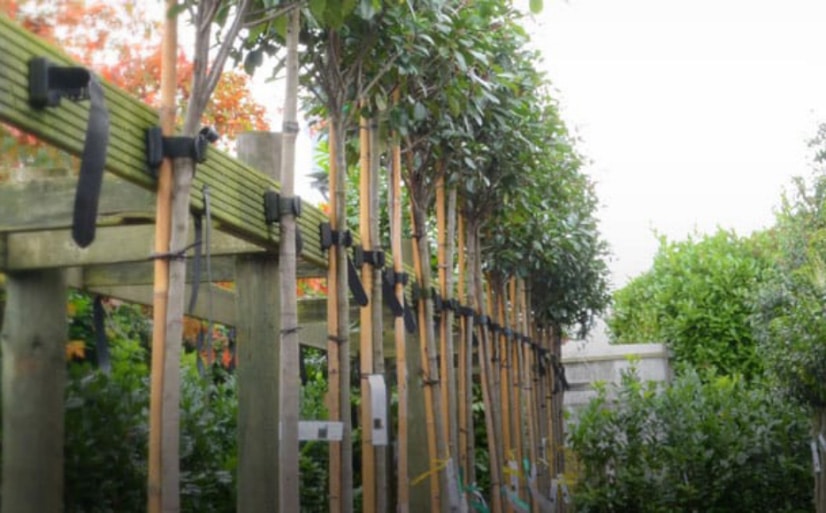
If you are looking for specific evergreen trees, Photinia, Leylandii hedging, Leylandii trees, instant hedging or shrubs, use the search bar at the top of the page